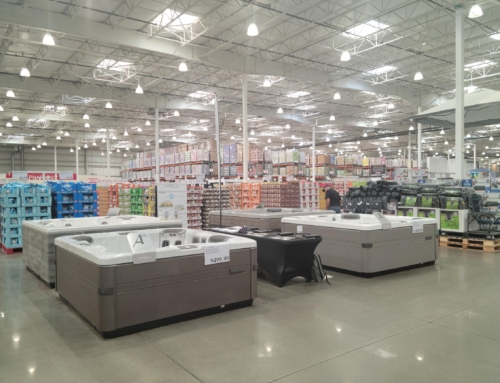 Social media is no longer a new and curious world of selfies, shout-outs, and self-promotion. According to the 2014 Nielsen Global Survey of E-Commerce, 61% of consumers use social media sites to help make purchase decisions. Today’s social networking sites are robust communities of interconnected people and businesses sharing personal and experiential insight. It’s the party on the Internet that every business should attend. Yes, that includes small local businesses like spa stores.
Social media is no longer a new and curious world of selfies, shout-outs, and self-promotion. According to the 2014 Nielsen Global Survey of E-Commerce, 61% of consumers use social media sites to help make purchase decisions. Today’s social networking sites are robust communities of interconnected people and businesses sharing personal and experiential insight. It’s the party on the Internet that every business should attend. Yes, that includes small local businesses like spa stores.
Are you missing the party?
Here are a few specific tips to help you make social media work for you and your local retail business.
Establish Social Marketing Goals
Before digging into all of the alternatives, retailers should first determine exactly what you want to achieve with your social marketing efforts. By defining the purpose, you’re giving your plan something to strive for while outlining a measurement tool for success. Goals and objectives should be specific and should represent reasonable expectations.
According to the 2014 Nielsen Global Survey of E-Commerce, 61 percent of consumers use social media sites to help make purchase decisions.
Do you want to advertise, generate referral business, support your existing customers, improve your SEO, or strengthen your brand? Social media can do all of these things for your business, but you have to go about it in the right way to get results.
Identify Your Social Platforms
 The number of social media sites is seemingly countless these days. As a spa retailer however, you don’t need to maintain an active presence on all of them to be effective.
The number of social media sites is seemingly countless these days. As a spa retailer however, you don’t need to maintain an active presence on all of them to be effective.
Each of the various social media platforms can serve different purposes and goals. This means that your successful social media strategy may just concentrate on the few that make the most business sense to you. To determine how to prioritize your efforts, it’s essential to understand the potential value each platform presents.
Blog
A blog is a vital part of your website—this is where you share your best up-to-date information. Regular blog content helps build authority and is a critical part of your SEO strategy. Make sure your blog content answers your customer’s questions and provides value.
With the largest user base of all social networks (over 1 billion), Facebook is a must. Once just a place for people to reconnect with old friends, Facebook has morphed into a content distribution portal and an advertising platform for businesses (with incredible targeting). Facebook can work for local ads, help SEO, support customer loyalty, and raise brand awareness.
Houzz
A close second to Facebook in terms of importance for local spa retailers would be the niche site Houzz, which is specifically tailored to reach home improvement customers. Houzz offers free profiles and a targeted ad platform for generating new customers.
Google+
Google+ is fading into obscurity as a social network, however, Google My Business has risen from the ashes as a critical platform, especially for local businesses like spa stores. Google My Business is the #1 place to list your business on the internet. You must be there. This will strengthen your SEO strategy and provide another location where customers can find you.
Twitter is a good, albeit non-critical, platform for sharing links to other content, listening for trends, and for building lists of important industry contacts. It can help support your SEO efforts when you share blog content and is a good place to share links to sales, events, and promotions. Be sure to use hashtags so people that don’t follow your business can find your tweets. Don’t go crazy with the amount of time you spend here.
YouTube
YouTube is a huge video platform that also acts a bit like a social media site. It’s the #1 place on the internet for discovery of video content. It’s a great ad platform with decent targeting if you have a short pre-roll commercial and it can support your SEO and customer acquisition efforts.
Foursquare
Foursquare is an important geolocation app for local brick and mortar stores that offers some local advertising options and also helps boost SEO.
Pinterest drives website traffic, particularly for users looking for home project ideas and health/wellness tips.
Instagram works like Pinterest as a discovery tool, however, without the benefit of driving much website traffic. It’s a good place to quickly share project photos that support your brand.
Other Social Media Sites
Snapchat, Periscope, Tumblr, Vine, and most other social platforms are not necessary for local retailers in most cases, but may have a particular creative use for your business. Be aware and use them if you identify a potential audience.
Don’t worry about using every social media platform. Pick the social media sites that help you reach your business goals and make a regular dedicated effort to using them.
Create an Editorial Calendar
Marketing strategists today almost all agree that to be a successful marketer, you have to think like a publisher. If you use social media, you are a publisher. You are not the New York Times of course, but you are publishing.
Congratulations.
Now how do you do that?
Well, it starts with an editorial calendar.
What is an editorial calendar? In short, it is an organizational tool that provides a framework for being deliberate and intentional about when and how you publish. Several free editorial calendar templates are available online, or you can even use a simple spreadsheet.
Determining what content to add to your calendar doesn’t have to be difficult. Come up with ideas for each holiday, each season of the year, and each special event you do. Jot these time-sensitive ideas down on your calendar first, then fill in the gaps with both informational and fun ideas. Post once per week to your blog, 3-4 times per week to Facebook and Google+, and 3-4 times per day if you use Twitter. Pin things from your site and blog, along with other images you like to your Pinterest boards for 30 minutes per week. Spend about the same amount of time updating your Houzz profile with new projects. Upload helpful YouTube videos whenever possible. If you identify a specific business purpose, utilize Instagram, Periscope, Tumblr, Vine, and other niche platforms as needed. If you plan first and stick to a calendar, this won’t be overwhelming (see the next tip).
Repurpose Your Content for Use on Multiple Platforms
The information from one blog post can be segmented, restated, and reused across many different platforms. A single blog post may produce 2 or 3 Facebook and Google+ posts, dozens of Tweets, several Pinterest pins, one YouTube video, one Houzz project, one Tumblr re-blog and more. Just be sure each piece of repurposed content is optimized for the platform on which you intend to share it.
Take Advantage of Other People’s Content
To achieve an enviable social media presence, you don’t have to be the most creative kid in the class. Pointing to content by other people is just fine. For example, share social media posts from the brands you sell. Look for other valuable pictures, links, blogs, and information and share them when appropriate. The key is creating value for your community in everything you share.
As Marketing Nutz CEO and Founder Pam Moore states, “You can never go wrong by investing in communities and the human beings within them.”
Matt Goulart of Ignite Digital, a digital marketing agency featured in Forbes goes even further to proclaim, “Social media is about the people! Not about your business. Provide for the people and the people will provide for you.”
And don’t forget to credit the source. You’re building a network, so giving credit when you share something helps others know you appreciate what they are contributing.
Listen to What’s Being Said About You
“A brand is no longer what we tell the consumer it is—it is what consumers tell each other it is.” – Scott Cook, Co-Founder of Intuit
Listening to the buzz on social media will help you know more about your customers and can give you a better feel for what topics and products people find interesting. It can also alert you to any potential negative publicity, so you can stay in front of it. Along with Google alerts, utilize social media tools like Hootsuite (there are many others) to see what’s being said about your business and your product categories. Perch is a useful app for tracking what’s being said about both your own business and your competitors. Install a listening tool, link your accounts, and check it for five minutes every day. That’s really all it takes.
A brand is no longer what we tell the consumer it is – it is what consumers tell each other it is. - Scott Cook, Co-Founder of Intuit
According to Jeff Zabin, CEO & Research Director of IT market research firm Gleanster, LLC, a business’s long-term goal for analytics should not only be the exploration of positive and negative buzz, but interpreting the organic reasons for that buzz. In doing so, companies will be able to “to drive business value” with the use of their findings.
Optimize Your Profiles
Gartner and Forrester studies show that 94% of smartphone users look for local information on their device, and 90% take action after the search. If used for nothing else, social media sites are yet another location where people can find your business online. Be sure to provide all of the information you can on your profiles. This includes address, phone, website, hours, and anything else that could direct people your way. Use professional imagery to be sure to put your best foot forward.
Say the Right Things with the Right Tone
The voice in your social media messages is important. Be helpful without being pushy. It’s been said that, “Pushing a company agenda on social media is like throwing water balloons at a porcupine.” Be fun without being crass or offensive. Don’t try too hard. The basic social signals you get and give in everyday real life apply online. Nobody likes the person at the party who only talks about him/herself, is rude, is needy, or who tries to sell something to everyone else. Be likable and people will want to engage.
Summary
Social media is not magic, but it does provide a critical link between your business and your potential customers. Start with a goal and utilize these basic tips to take advantage of social media’s incredible reach. Make it work for your business. You will be “liked” in no time.









Spot on. Hi clear info on how to do your social media the right way
Thanks for reading!
Ohh, cool week! Thanks for sharing that! I think prior to the last “storm” I went through, I have always felt hopeless during those harder times. But I’ve had some break through’s and now I understand how this all works. Hard times come but they don’t last forever. I can appreciate the harder times now because I know there’s A LOT to learn during them too!